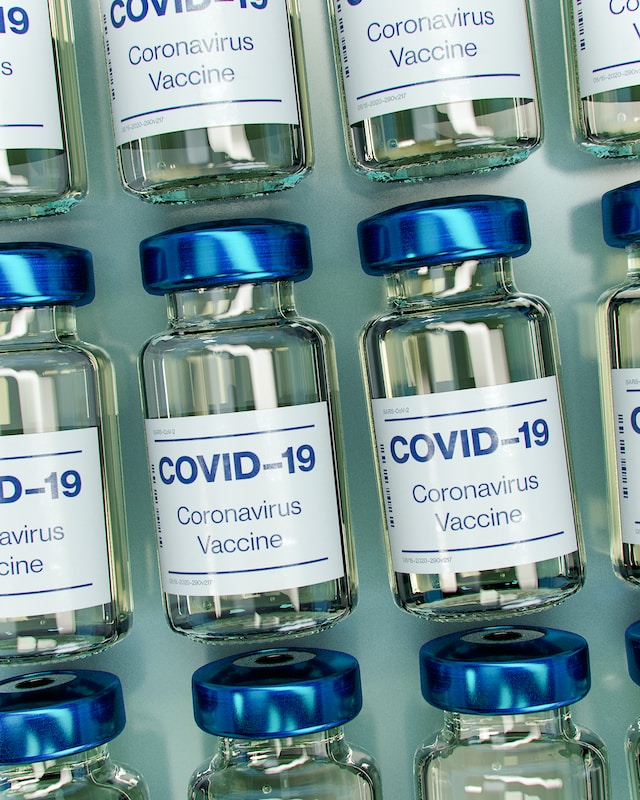For Complete List: Healthcare.gov/glossary
Allowable Fee/Allowable Amount means the maximum amount on which payment is based for covered health services for both In-Network and Out-of-Network Providers.
Ancillary Charge (in relation to the pharmacy) means a charge which the Covered Person is required to pay to a Preferred Pharmacy for a covered Brand-Name Prescription Drug Product for which a Generic substitute is available. The Ancillary Charge is determined by subtracting the contracted price of the Generic drug from the contracted price of the Brand-Name drug. Any Copayment amounts are in addition to the Ancillary Charge.
Annual Out-of-Pocket Maximum: The most you have to pay for covered services in a plan year. After you spend this amount on deductibles, copayments, and coinsurance, your health plan pays 100% of the costs of Covered Benefits. The Out-of-Pocket limit doesn’t include your monthly premiums.
The Annual Out-of-Pocket Maximum includes the following:
1. Plan Year Deductible
2. Copayments; and
3. Coinsurance
Family Limit for the Annual Out-of-Pocket Maximum: The Family Annual Out-of-Pocket Maximum is reached when two or more Family members, who are insured under this Policy, have incurred and paid deductibles, copays, and coinsurance equal to the amount listed in the Schedule of Benefits for that specific plan. When the total out-of-pocket expense is reached within the Plan Year of the effective policy, We then will pay 100% of Covered Medical Expenses incurred by all Family members for the remainder of the Plan Year. The total of out-of-pocket medical expenses returns to zero at the end of the plan year, and the accumulation would begin again for the new plan year.
Coinsurance means a percentage amount a member is responsible to pay out-of-pocket for health care services after satisfaction of the applicable deductibles or copayments, or both. The Coinsurance is applied to the Allowable Fee for Covered Medical Expenses incurred for Covered Benefits. The Coinsurance amount is shown in the Schedule of Benefits and applies to the Out-of-Pocket Maximum. No further co-insurance is assessed when the Out-of-Pocket Maximum is met.
Copay or Copayment means a fixed dollar amount the Covered Person is required to pay for specifically listed Covered Benefits as shown in the Schedule of Benefits. Copayments are generally paid to the Provider at the time of service. Copayments apply towards the satisfaction of the Out-of-Pocket Maximum.
Covered Benefits means all Medically Necessary services, supplies, medications and devices covered under this Policy as provided under Section 5, Covered Benefits. Covered Benefits are payable as shown in the Schedule of Benefits.
Covered Dependent means Your spouse or domestic partner, and any of Your dependent children (as defined in this Policy) who are insured under this Policy. A Covered Dependent must be listed as Your Dependent in Your Application for this Policy and approved by Us. The required premium for the Covered Dependent’s coverage under this Policy must be paid.
Covered Medical Expense means expenses incurred for Medically Necessary Covered Benefits that are based on the Allowable Fee and:
1. Covered under this Policy;
2. Provided to the Covered Person by and/or prescribed by a Covered Provider for the diagnosis or treatment of an active Illness or Injury or maternity care.
The Covered Person must be charged for such services, supplies, and medications. Covered Person means the Policy-owner and/or the Policy-owner’s Covered Dependents.
Deductible means the amount you pay for covered health care services before your insurance plan starts to pay. With a $2,000 deductible, for example, you pay the first $2,000 of covered services yourself. After you pay your deductible, you usually pay only a copayment or coinsurance for covered services.
The Deductible is shown in the Schedule of Benefits. The following do not apply towards satisfaction of the Deducible:
1) Services, treatments or supplies that are not covered under this Policy;
2) Co-pay amounts paid by the Insured;
3) The premium payments paid by the Insured; and
4) Amounts billed by Out-of-Network provider above the Allowable Fee.
Family Deductible: The Family Deductible is an aggregate Deductible as is shown in the Schedule of Benefits.
The Family Deductible must be satisfied by two of more family members, who are insured under this Policy, during the Calendar Year the policy is in force.
Once the Family deductible is met for the Calendar Year, no further payments toward the Family Deductible from Family members will be required for the remainder of that Calendar Year.
Dependent means Your: 1. Spouse or domestic partner; and 2. Dependent Child as defined in this Policy.
Dependent Child or Dependent Children means Your children who are: 1. Under age 26, regardless of their place of residence, marital status or student status; including: (a) newborn children; (b) stepchildren; (c) legally adopted children; (d)children placed for adoption with the Policy owner in accordance with applicable state or federal law;(e)foster children; and (f) children for whom You are a legal guardian substantiated by a court or administrative order; and 2. Unmarried dependent Handicap Children age 26 and over. Refer to the definition of Handicapped Child. A Dependent Child does not include a child who is enrolled for Medicare or Medicaid.
Emergency Medical Condition means a medical condition manifesting itself by acute symptoms of sufficient severity (including severe pain) so that a prudent layperson, who possesses an average knowledge of health and medicine, could reasonably expect the absence of immediate medical attention to result in a condition that places the health of the individual in serious jeopardy, would result in serious impairment to bodily functions, or serious dysfunction of any bodily organ or part; or with respect to a pregnant woman having contractions, that there is inadequate time to safely transfer the woman to another hospital for delivery or that a transfer may pose a threat to the health or safety of the woman or the fetus.
Exchange means the Health Insurance Marketplace through which qualified consumers can compare and purchase insurance from insurance companies. The state may operate a State- based Exchange, a Federally-Facilitated Exchange, or an Exchange in partnership with the federal Department of Health and Human Services. Exchanges are required by the Affordable Care Act.
Holistic Medicine means a form of alternative and complementary medicine. Practitioners apparently receive some level of training at holistic schools or courses. Accredited and licensed Medical Doctors occasionally will practice “Holistic medicine”. This approach to treatment uses a variety of herbal, spiritual, meditative, and other “natural” remedies and does not usually incorporate standard medical therapy in treatment of disease.
Home Health Services means a professional nursing service provided to a homebound Covered Person that can only be rendered by a licensed registered nurse (RN) or licensed practical nurse (LPN) provided such nurse does not ordinarily reside in the Covered Person’s household or is not related to the Covered Person by blood or marriage.
In-Network Provider means a Covered Provider who has a participation contract in effect with Mountain Health CO-OP’s Network to provide services to Covered Persons under this Policy. The In-Network Provider’s participation contract must be in effect at the time services are provided for Covered Benefits in order for Covered Medical Expenses to be eligible for In-Network benefits.
Out-of-Network Provider means a Covered Provider who does not have a participation contract in effect with the Mountain Health CO-OP In-Network Organization to provide services to Covered Persons under this Policy. When services are provided by an Out-of-Network Provider, the services provided are Out-of-Network and an Out-of-Network Provider Differential will be applied. Covered Person will be subject to reduced benefits under the plan and will be subject to Balance Billing by the Out-of-Network Provider.
To maximize your plan’s benefits, always make sure your healthcare provider is a Mountain Health CO-OP InNetwork Provider and do not assume all services at an In-Network facility are performed by an in-network provider.
Policy Effective Date or Effective Date means the date on which this Policy becomes effective. The PolicyEffectiveDate is shown in the Schedule of Benefits.
Policyholder means the person to whom this Policy is issued and is named as the Policy-owner in the Schedule of Benefits. The Policy-owner is the owner of this Policy, which means the Policy-owner may exercise the rights set forth in this Policy. On the Policy Effective Date, the Policy owner is as designated in the application for this Policy. The Policy-owner is also referred to as “You” or “Your”.
View more at Healthcare.gov/glossary






